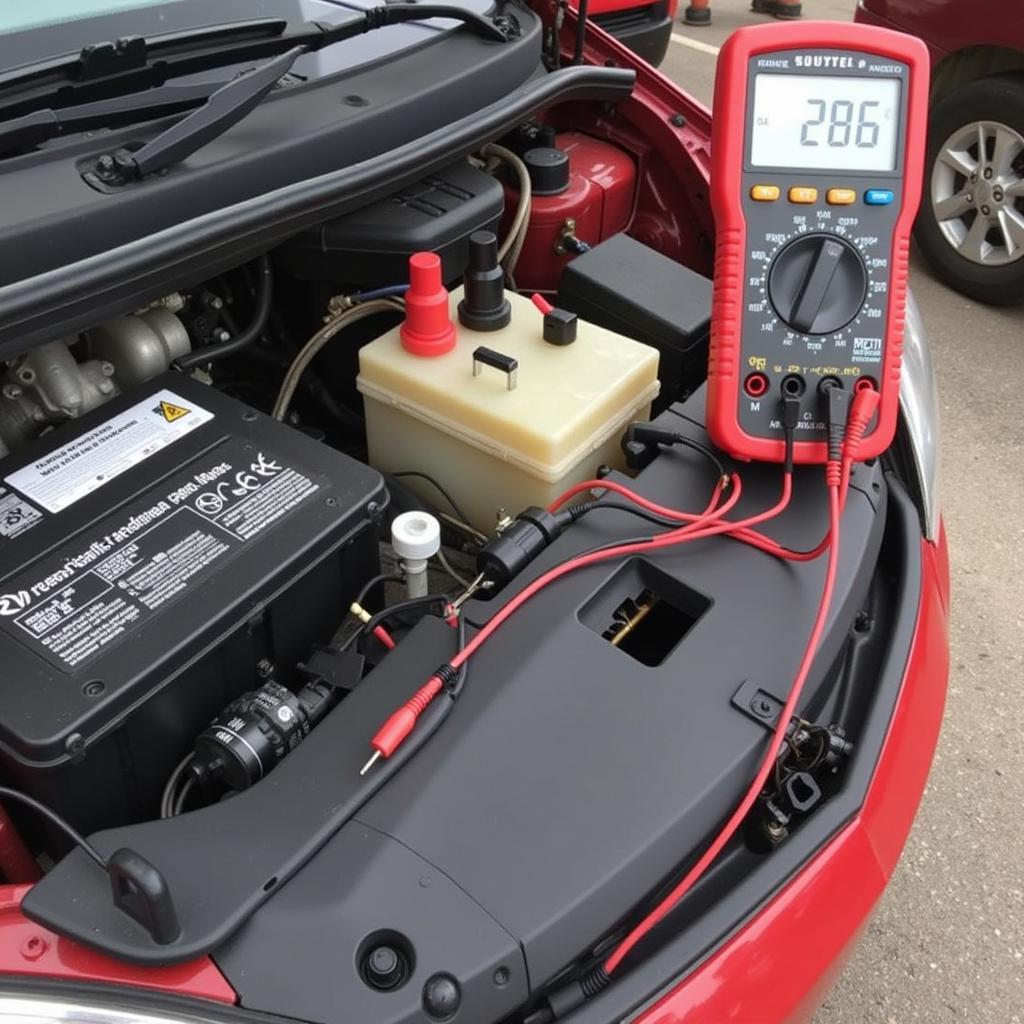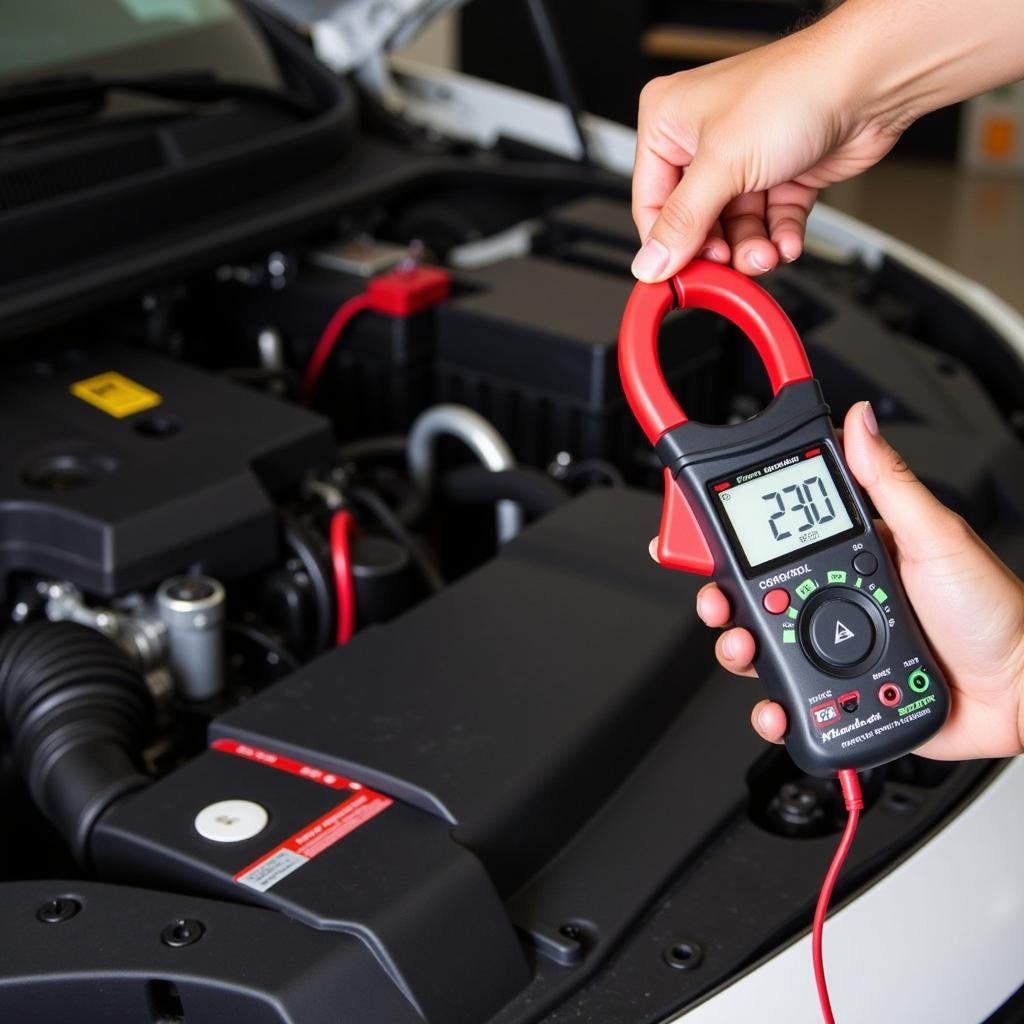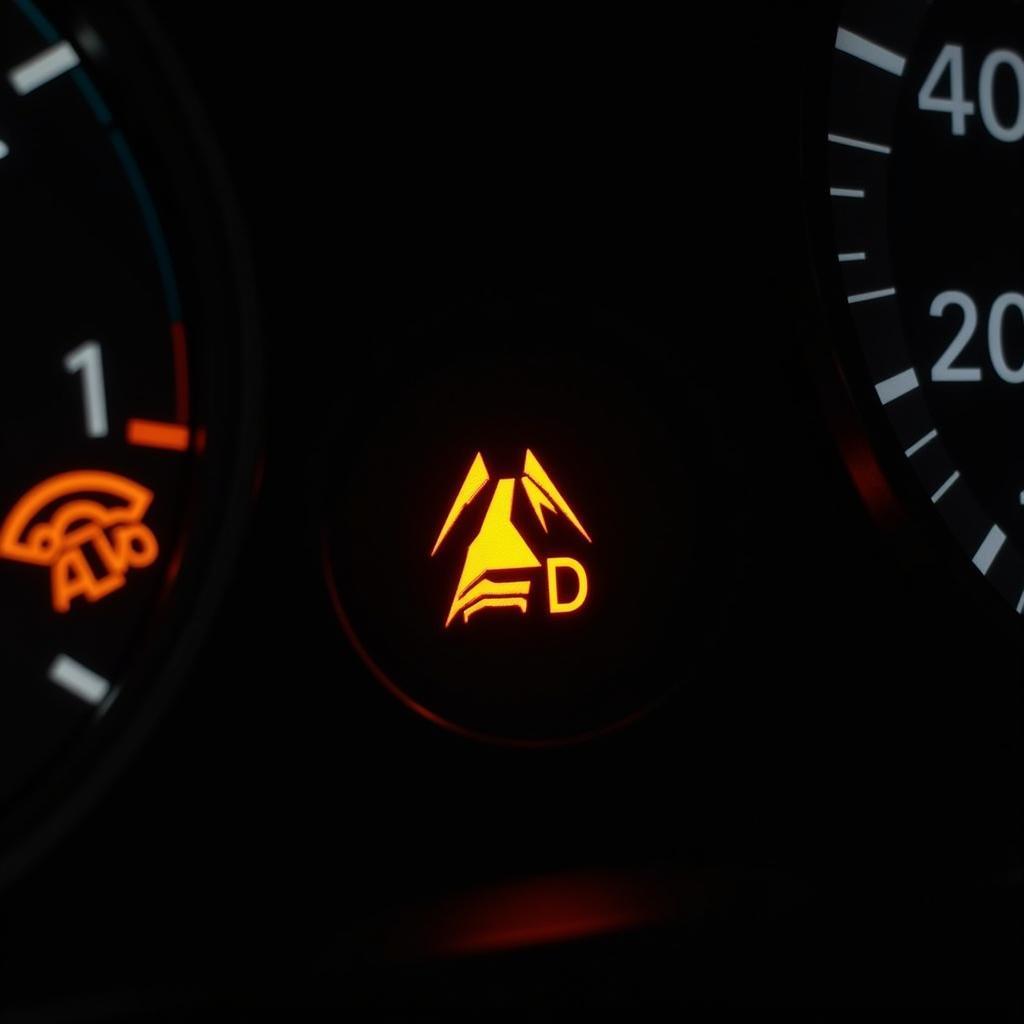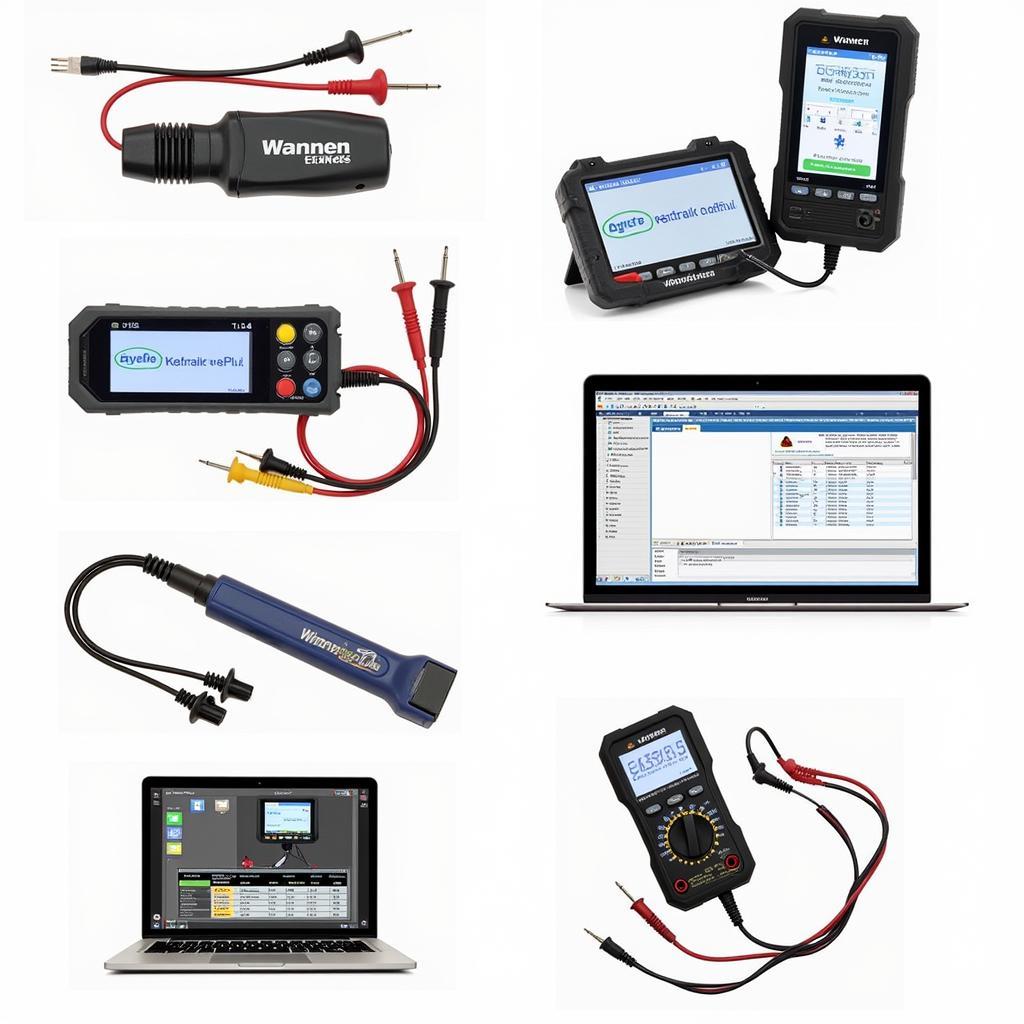A parasitic draw test is crucial for diagnosing a car battery drain. This comprehensive guide dives deep into various parasitic draw test methods, helping you pinpoint the culprit draining your car’s battery and get back on the road. Learn how to perform this test like a pro, even with limited technical experience. car parasitic draw test
Understanding the Dreaded Car Battery Drain
A dead car battery is a frustrating experience. While a failing battery is often the culprit, a parasitic draw can also be the silent killer. A parasitic draw, also known as a key-off drain, occurs when electrical components continue to consume power even after the vehicle is turned off. This slow but steady drain can leave you stranded with a dead battery, especially after a few days of inactivity. Knowing how to perform a parasitic draw test is essential for every car owner.
Identifying a parasitic draw early on can save you time, money, and frustration. A simple parasitic draw test can determine if there’s an excessive current drain and help you locate the source of the problem.
 Parasitic Draw Test Setup
Parasitic Draw Test Setup
Why a Parasitic Draw Test is Essential
A parasitic draw test helps identify the root cause of your battery drain. Instead of blindly replacing parts, this test allows you to pinpoint the specific component or circuit causing the issue. It’s a cost-effective solution that empowers you to diagnose the problem yourself, potentially saving you a costly trip to the mechanic. Moreover, a parasitic draw test can prevent further damage to your battery and electrical system. Consistent drain can shorten the lifespan of your battery, leading to premature replacement.
Different Methods for Performing a Parasitic Draw Test
Several methods exist for conducting a parasitic draw test, each with its own pros and cons. The most common methods involve using a multimeter, a test light, or an amp clamp. Each method provides a different level of detail and requires varying degrees of technical expertise.
Parasitic Draw Test with a Multimeter
The most accurate and detailed method is the parasitic draw test with a multimeter. parasitic draw test with clamp meter This method involves connecting the multimeter in series with the battery’s negative terminal. The multimeter is set to measure DC current (amps). With the car off and all accessories turned off, the multimeter reading indicates the amount of current being drawn.
Parasitic Draw Test with a Test Light
A simpler, though less precise, method is using a test light. parasitic draw test with test light This method provides a visual indication of current flow. By connecting the test light between the battery’s negative terminal and the negative cable, you can observe the brightness of the light. A bright light suggests a significant current draw.
Parasitic Draw Test with an Amp Clamp
The amp clamp offers a convenient and non-invasive way to perform the test. parasitic draw test with amp clamp This clamp-on device measures current flow without disconnecting the battery cable. It’s particularly useful for testing high-current circuits.
 Using an Amp Clamp for a Parasitic Draw Test
Using an Amp Clamp for a Parasitic Draw Test
How Much Parasitic Draw is Acceptable?
A small amount of parasitic draw is normal, typically around 25-50 milliamps (mA). This is required to maintain functions like the car’s clock, computer memory, and security system. Anything significantly higher than this indicates a potential problem. A draw of 100 mA or more is considered excessive and requires further investigation.
Troubleshooting a High Parasitic Draw
If your parasitic draw test reveals a high current draw, it’s time to locate the culprit. This can be done by systematically removing fuses one by one and observing the multimeter reading. When the current draw drops significantly, you’ve likely identified the circuit containing the problematic component. Consult your vehicle’s wiring diagram to determine which components are on that circuit.
“A common mistake people make is not waiting long enough for the car’s systems to go to sleep before taking the reading,” says John Smith, Automotive Electrical Engineer at XYZ Auto. “Some modules can take up to 30 minutes to fully power down.”
Common Causes of Parasitic Draw
Several components are common culprits in parasitic draw situations. These include faulty interior lights, glove box lights, trunk lights, door switches, and aftermarket accessories. Faulty alternators, relays, and even corroded wiring can also contribute to excessive current drain.
power probe parasitic draw test
“Another often overlooked cause is a faulty aftermarket stereo installation,” adds Sarah Jones, Automotive Diagnostic Technician at ABC Auto. “Improper wiring can lead to continuous power drain, even when the radio is off.”
Conclusion: Conquer Your Car Battery Drain with the Parasitic Draw Test
The parasitic draw test is a powerful tool for any car owner. By understanding how to perform this test, you can effectively diagnose and address car battery drain issues. This knowledge will save you valuable time and money, and empower you to keep your car running smoothly. Don’t let a parasitic draw leave you stranded. Take control of your car’s electrical system and perform a parasitic draw test today!
FAQ: Your Parasitic Draw Test Questions Answered
-
What is a parasitic draw? A parasitic draw is a constant drain on your car’s battery even when the car is off.
-
How do I know if I have a parasitic draw? A parasitic draw test can determine if your car is experiencing excessive current drain.
-
What tools do I need for a parasitic draw test? You will need a multimeter, test light, or amp clamp.
-
How much parasitic draw is acceptable? A small draw (25-50mA) is normal. Anything over 100mA is excessive.
-
What are the common causes of parasitic draw? Faulty lights, door switches, aftermarket accessories, and alternators are common causes.
-
How do I fix a parasitic draw? By identifying the circuit with the high draw through fuse testing and then checking each component on that circuit.
-
Can I perform a parasitic draw test myself? Absolutely! With the right tools and guidance, anyone can perform this test.



